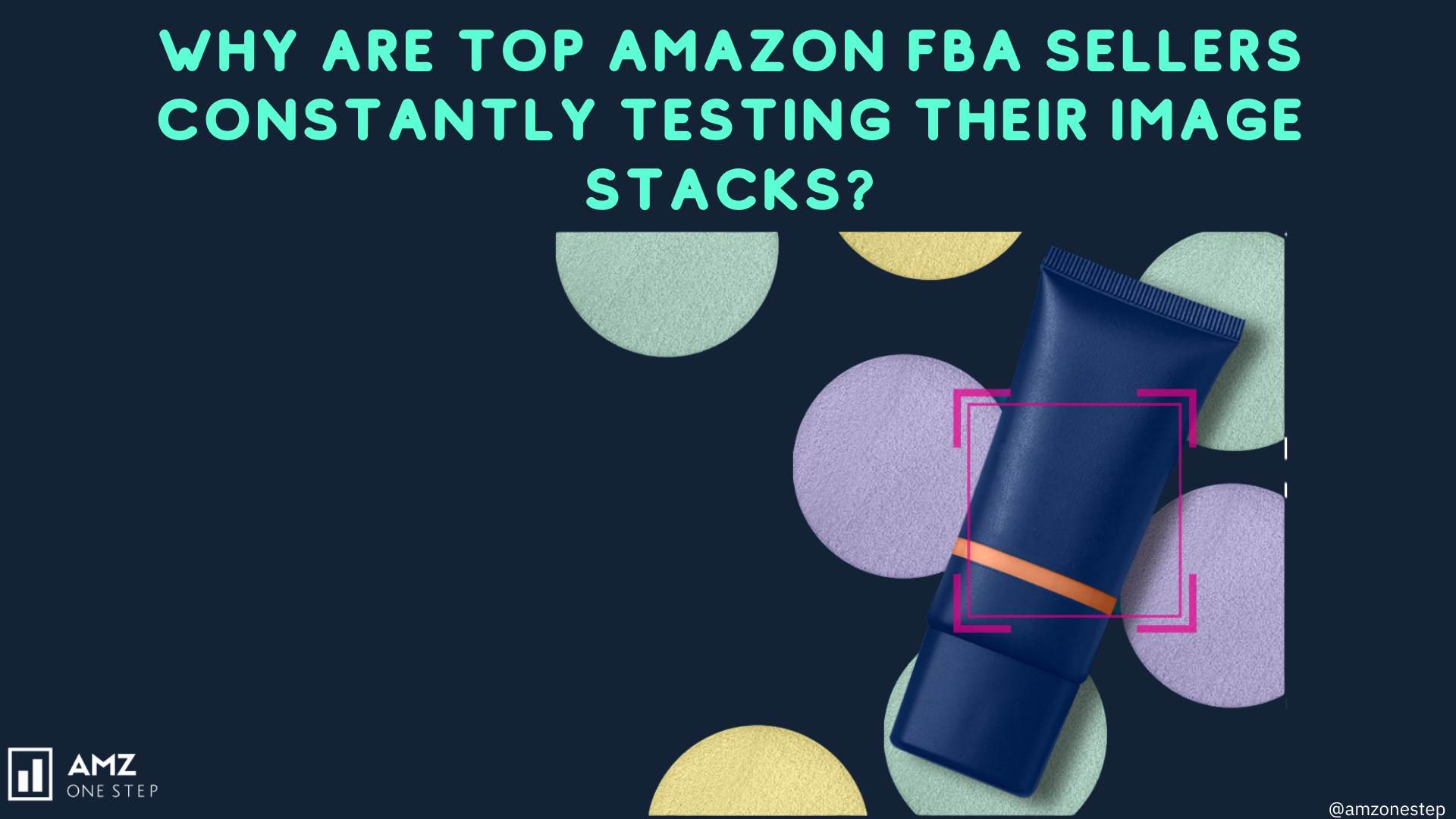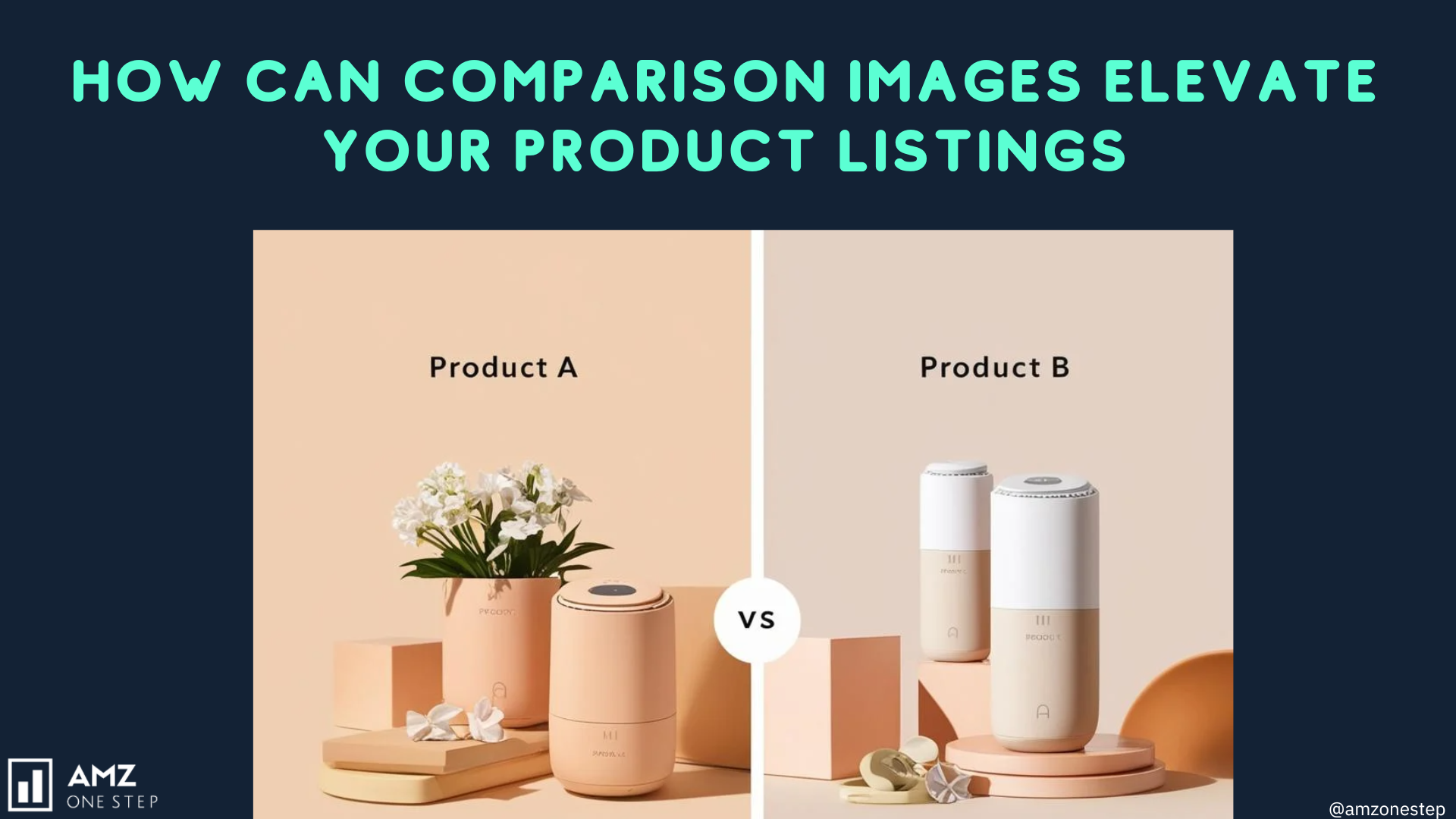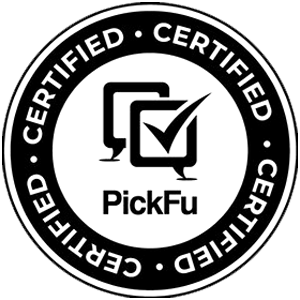Staying ahead means adapting to change with finesse. Amazon, a titan in online retail, has recently revamped its listing rules, setting the stage for a new era of product presentation. But don’t fret—these updates are your golden opportunity to refine your listings and boost your sales.
Imagine your product listings as a well-orchestrated performance, where every detail from titles to listing images is crucial in captivating your audience. Amazon’s latest rules are not just hurdles; they’re steppingstones to elevate your brand’s presence and increase your visibility.
Get ready to transform your listings into powerful tools that drive engagement and conversion. Let’s dive into the world of Amazon’s updated rules and discover how to leverage them for your success!
Key Changes in Amazon’s Product Listing Guidelines
As Amazon continues to dominate the e-commerce landscape, staying updated with its evolving listing guidelines is crucial for Amazon FBA sellers aiming to thrive in this competitive environment.
Recent changes in Amazon’s product listing policies have introduced new requirements and best practices designed to enhance the shopping experience and ensure compliance with legal standards.
Enhanced Product Title Requirements
One of the most significant updates involves the structure and content of product titles. Amazon now mandates that titles be clear, concise, and include relevant keywords while avoiding excessive capitalization and promotional language.
- For instance, instead of a title like “Amazing High-Quality Leather Wallet – Best Buy – Limited Time Offer!”, you should use a straightforward and informative title such as “Genuine Leather Wallet for Men – RFID Blocking – Slim Design.” This new format helps customers quickly understand what the product is and its key features without being overwhelmed by marketing jargon.
Product titles are a crucial element in Amazon’s new listing format, and they play a significant role in keyword optimization. The updated guidelines require titles to be informative and clear, incorporating relevant keywords without appearing spammy.
- For example, if you’re selling a fitness tracker, instead of a generic title like “Fitness Tracker,” a more effective title might be “Waterproof Fitness Tracker with Heart Rate Monitor – Activity and Sleep Tracking – Compatible with iOS and Android.” This title not only includes keywords like “Fitness Tracker,” “Heart Rate Monitor,” and “Activity Tracking,” but it also provides potential buyers with specific details about the product’s features.
Improved Bullet Point Formatting
Amazon has refined the rules for bullet points to enhance readability and user experience. The updated guidelines emphasize the need for bullet points to be succinct, focused on key product benefits, and free from promotional language.
Previously, a product listing might have included bullet points like:
- “This wallet is fantastic and the best choice ever!”
- “Super amazing and high-quality materials used.”
Under the new rules, the bullet points should be more specific and informative, such as:
- “Made from genuine leather for durability and a premium feel.”
- “Features RFID blocking technology to protect against identity theft.”
These changes aim to provide customers with essential information in a clear and organized manner.
Bullet points are another important area where keywords can be effectively used. Amazon’s new guidelines encourage Amazon FBA sellers to use bullet points to highlight key features and benefits of the product, integrating relevant keywords in a natural and informative manner.
Consider a listing for a set of kitchen knives. Instead of bullet points like:
- “Great for all your cutting needs!”
- “Sharp and durable!”
You should use:
- “High-carbon stainless steel blades for superior sharpness and durability.”
- “Ergonomic handles for comfortable grip and precision control.”
- “Includes chef’s knife, paring knife, and serrated bread knife.”
These bullet points incorporate keywords such as “high-carbon stainless steel,” “ergonomic handles,” and “chef’s knife,” while also providing valuable information to the buyer.
Detailed Product Descriptions
Product descriptions have become more critical with the latest updates, focusing on providing comprehensive and accurate information. Amazon now requires descriptions to be detailed and directly related to the product’s features and benefits, avoiding any misleading or exaggerated claims.
For example, rather than stating “This product will make your life better,” a compliant description would provide detailed information like:
- “This leather wallet features a slim design, making it easy to carry in your pocket. It includes RFID-blocking technology to safeguard your personal information from unauthorized scans. The wallet is designed with multiple compartments for cards and cash, ensuring convenient organization.”
The product description section is an opportunity to expand on your keywords and provide a detailed narrative about your product. Amazon’s updated guidelines stress the importance of avoiding keyword stuffing and instead focusing on providing a clear and engaging description.
For instance, for a smart home thermostat, rather than simply listing keywords like “smart thermostat,” “home automation,” and “energy-saving,” you might write:
- “Upgrade your home comfort with our smart thermostat, designed to seamlessly integrate with your home automation system. This energy-saving device offers precise temperature control and can be managed remotely via your smartphone. Compatible with both Alexa and Google Assistant, it ensures optimal comfort while reducing energy costs.”
This description not only includes essential keywords but also provides a compelling overview of the product’s features and benefits.
Updated Image Requirements
The new guidelines place a stronger emphasis on image quality and consistency. Amazon requires that all product listing images be high-resolution, well-lit, and accurately represent the product. Additionally, listing images should be free from text overlays and promotional graphics.
For example, a product listing for a kitchen blender should feature:
- High-resolution listing images showing the blender from different angles.
- Close-up shots of key features like controls or attachments.
- Listing images of the blender in use, demonstrating its functionality.
Listing images that include text like “The Best Blender Ever!” or promotional graphics are no longer allowed.
Changes in Product Variations
Amazon has updated the rules for listing product variations to ensure they are clear and logical. Variations such as size, color, or style must be grouped under a single-parent listing, with each variation having its own distinct option.
Previously, Amazon FBA sellers might have created separate listings for each color of a product. Now, Amazon encourages using a parent listing with variations, such as:
- Parent Listing: “Men’s Casual Shoes”
- Variation 1: “Size 10 – Black”
- Variation 2: “Size 10 – Brown”
- Variation 3: “Size 11 – Black”
- Variation 4: “Size 11 – Brown”
This approach helps consolidate options and improves the shopping experience by allowing customers to view all variations under one listing.
Compliance with New Regulatory Standards
Amazon has also introduced guidelines to ensure that all product listings comply with relevant regulatory standards and safety regulations. Amazon FBA sellers are now required to provide accurate information regarding certifications, safety features, and compliance with local laws.
For example, a listing for a toy should include:
- Information about compliance with safety standards like ASTM F963.
- Details on age appropriateness and any small parts warnings.
Providing accurate and transparent information helps build trust with customers and ensures that products meet necessary safety and regulatory requirements.
The Impact of Amazon’s New Rules on Product Reviews
Stricter Review Guidelines
Amazon’s new rules have introduced stricter guidelines for product reviews to combat fraudulent practices and ensure authenticity. Amazon FBA sellers must now be more vigilant about the sources of reviews and adhere to new standards for soliciting and managing feedback.
- For instance, Amazon has tightened regulations on incentivized reviews. Amazon FBA sellers are now prohibited from offering discounts or free products in exchange for positive reviews. This change aims to eliminate biased feedback and ensure that reviews reflect genuine customer experiences. As a result, Amazon FBA sellers need to focus on delivering exceptional products and customer service to naturally earn positive reviews.
Enhanced Review Moderation
The latest updates have also enhanced Amazon’s review moderation process. The platform now employs advanced algorithms and increased manual oversight to detect and remove fake or manipulated reviews.
This means that reviews that are deemed suspicious or non-compliant with Amazon’s policies are more likely to be flagged or removed.
Amazon FBA sellers need to be aware of these changes and ensure that their review practices comply with Amazon’s standards.
- For example, engaging in review manipulation or using review-generating services that promise to artificially boost ratings can lead to penalties and account suspension.
Instead, focusing on genuine customer engagement and providing excellent products can help build a solid reputation and encourage authentic reviews.
Changes to Review Metrics and Display
Amazon has made updates to how review metrics are displayed on product listings. The platform now emphasizes the importance of verified purchase reviews, which are reviews left by customers who have actually bought the product through Amazon.
Verified purchase reviews carry more weight and are prominently displayed, enhancing their credibility. Amazon FBA sellers should encourage their customers to leave reviews through legitimate means, such as follow-up emails or customer service interactions.
Highlighting the value of verified purchase reviews and focusing on maintaining high-quality products can positively impact your product’s reputation and visibility.
New Policies on Review Solicitation
The updated rules also include new policies on how Amazon FBA sellers can solicit reviews from customers. Amazon now requires that review solicitation be conducted in a manner that does not pressure or coerce customers into leaving feedback.
Amazon FBA sellers are restricted from using pre-written review templates or automated messages that could influence the content of the review.
- For example, instead of sending a generic message that asks customers to “leave a positive review,” Amazon FBA sellers should focus on providing exceptional service and requesting honest feedback in a non-intrusive manner. This approach aligns with Amazon’s guidelines and helps foster a more genuine review environment.
Impact on Review Quality and Seller Reputation
The stricter review policies and enhanced moderation efforts are likely to result in higher-quality reviews and a more trustworthy review system. While this may lead to a reduction in the overall number of reviews, it will improve the reliability of feedback and provide more accurate insights into product performance.
Amazon FBA sellers should view these changes as an opportunity to enhance their reputation by focusing on delivering high-quality products and exceptional customer service. Positive, genuine reviews will become even more valuable in this environment, reinforcing the importance of maintaining high standards.
Avoiding Common Mistakes with New Amazon Listing Rules
Misunderstanding Title Requirements
One of the most common mistakes Amazon FBA sellers make is misinterpreting Amazon’s new title requirements. The updated guidelines emphasize clarity, relevance, and the exclusion of promotional language.
- A frequent error is including excessive keywords or promotional phrases in titles. For instance, a title like “Amazing Deal on the Best Quality Stainless Steel Water Bottle – 50% Off Today!” not only appears spammy but also violates Amazon’s rules. Instead, focus on a clear and descriptive title such as “Stainless Steel Insulated Water Bottle – 24 Oz – Leak-Proof and BPA-Free.”
Neglecting to Update Bullet Points
Another common mistake is failing to update bullet points to align with Amazon’s new formatting guidelines. Bullet points should be concise, focused on key features, and free from marketing fluff.
- Amazon FBA sellers often make the mistake of using vague or overly promotional bullet points like “This product is simply the best!” or “Top-notch quality guaranteed!” Instead, use specific details such as “Made from high-grade stainless steel for long-lasting durability” and “Features a double-wall insulation to keep beverages hot or cold for hours.”
Overloading Product Descriptions with Keywords
While keywords are essential for search visibility, overloading your product description with them is a common error. Amazon’s guidelines now stress the importance of providing detailed, relevant information without keyword stuffing.
- For example, rather than repeating “organic cotton” multiple times in a description, provide a comprehensive overview: “Our organic cotton t-shirts are made from 100% certified organic cotton, offering a soft, breathable feel. Designed with a relaxed fit and reinforced stitching, these shirts are perfect for everyday wear.”
Using Poor-Quality Listing images
High-quality listing images are crucial for Amazon listings, and neglecting to adhere to updated image requirements is a significant mistake. Amazon now requires listing images to be high-resolution, clear, and free from promotional text or watermarks.
- A common issue is using low-resolution or poorly lit listing images that fail to showcase the product effectively. For instance, a blurry or poorly lit image of a kitchen appliance will not attract buyers. Instead, ensure that listing images are high-resolution, and well-lit, and show the product from multiple angles, including close-ups of important features.
Incorrectly Handling Product Variations
Amazon’s new rules for product variations aim to improve clarity and organization. A common error is creating separate listings for each variation rather than using a parent listing with variations.
- For example, if you sell a product available in different colors and sizes, creating individual listings for each option can confuse customers and clutter search results. Instead, use a single parent listing with variations, such as:
- Parent Listing: “Men’s Athletic Shoes”
- Variation 1: “Size 10 – Black”
- Variation 2: “Size 10 – White”
- Variation 3: “Size 11 – Black”
- Variation 4: “Size 11 – White”
Overlooking Regulatory Compliance
Recent updates have placed greater emphasis on compliance with regulatory standards. A common mistake is failing to provide accurate information about certifications, safety features, and legal requirements.
- For instance, listing a product as “child-safe” without appropriate certification or failing to mention safety warnings can lead to issues. Ensure that all claims are backed by evidence and that regulatory requirements are met. Include relevant details such as “Meets ASTM F963 safety standards for toys.”
Ignoring Backend Keywords
Backend keywords are essential for expanding your listing’s reach, yet some Amazon FBA sellers overlook this aspect. Amazon’s guidelines now stress the importance of using backend keywords to capture a wider range of search queries.
- A frequent mistake is using irrelevant or repetitive backend keywords. For instance, if you’re selling a yoga mat, including keywords like “exercise mat” or “fitness mat” can broaden your search visibility. Ensure that backend keywords are relevant and varied, avoiding redundancy and focusing on different search terms.
Failing to Monitor Performance
Finally, failing to regularly monitor and adapt your listings based on performance data is a common mistake. Amazon’s algorithms and guidelines may change and staying informed about how your listings are performing is crucial for ongoing success.
- Regularly review your listing analytics to assess keyword performance, customer feedback, and sales metrics. Adjust your strategies based on this data to improve your listings and remain compliant with Amazon’s evolving rules.
Amazon’s Changes in Listing Requirements for New Amazon FBA Sellers
Streamlined Listing Processes
Amazon has introduced several changes aimed at streamlining the listing process for new Amazon FBA sellers. These updates are designed to make it easier to create and manage product listings while ensuring compliance with Amazon’s standards.
Simplified Listing Templates
New Amazon FBA sellers now have access to simplified listing templates that guide them through the process of creating a listing. These templates help ensure that all required fields are filled out correctly and that listings comply with Amazon’s guidelines.
- For instance, the new templates provide clear instructions on how to input product details, upload listing images, and set pricing, reducing the risk of errors and omissions.
Enhanced Listing Tools
Amazon has updated its listing tools to offer a more user-friendly interface for new Amazon FBA sellers. The new tools include features like real-time error checking, automated suggestions for missing information, and improved support for bulk listings. These enhancements help new Amazon FBA sellers create accurate and complete listings more efficiently.
Read More: How to Increase Amazon Listing External Traffic: 20 Tips
Updated Title and Description Guidelines
Amazon’s new listing requirements place a greater emphasis on clarity and relevance in product titles and descriptions. New Amazon FBA sellers need to adhere to these updated guidelines to ensure their listings are effective and compliant.
Title Structure
Amazon now requires that product titles be clear, concise, and focused on key attributes. Titles should avoid promotional language and keyword stuffing.
- For example, instead of a title like “Buy Now! Best Quality 24-Piece Kitchen Knife Set – Amazing Deal!”, use “24-Piece Kitchen Knife Set – High-Quality Stainless Steel with Ergonomic Handles.”
Description Content
Descriptions should provide detailed and accurate information about the product, including its features, benefits, and uses. New Amazon FBA sellers must avoid overly promotional language and focus on delivering content that helps customers make informed purchasing decisions.
- An effective description might include details such as “This kitchen knife set features high-carbon stainless steel blades for precision cutting and ergonomic handles for comfort during extended use.”
Image Requirements and Best Practices
High-quality listing images are essential for attracting customers and complying with Amazon’s updated listing requirements. New Amazon FBA sellers must adhere to specific guidelines to ensure their product listing images meet Amazon’s standards.
Image Quality
Amazon now mandates that all product images be high-resolution and free from text or watermarks. Listing images should clearly show the product and its key features. For example, if selling a fitness tracker, include clear, high-resolution listing images of the device from multiple angles and close-ups of the display and features.
Image Format and Size
New Amazon FBA sellers should ensure that their listing images meet Amazon’s format and size requirements. Listing images must be in JPEG, PNG, or GIF format and at least 1000 pixels in height or width to enable zoom functionality. Following these specifications helps improve the visual appeal and functionality of your listings.
Improved Compliance and Verification Processes
Amazon has implemented more stringent compliance and verification processes to ensure that new Amazon FBA sellers adhere to its standards and policies. These changes are designed to prevent the listing of counterfeit or non-compliant products.
Enhanced Verification
New Amazon FBA sellers are now required to undergo a more thorough verification process to confirm their identity and business legitimacy. This includes providing additional documentation and undergoing identity checks.
- For example, you may need to submit proof of address, business registration documents, and bank statements.
Compliance Checks
Amazon has introduced more rigorous checks to ensure that product listings comply with relevant regulations and standards. New Amazon FBA sellers must provide accurate information about product certifications, safety standards, and legal requirements.
- For instance, if selling children’s toys, you must provide documentation proving that the products meet safety standards such as ASTM F963.
Focus on Customer Experience
Amazon’s updates also emphasize enhancing the customer experience by improving the accuracy and quality of product listings. New Amazon FBA sellers should prioritize factors that contribute to a positive shopping experience.
Accurate Product Information
Ensure that all information provided in the listing is accurate and up to date. This includes product dimensions, materials, and features. Inaccurate or misleading information can lead to negative reviews and a poor customer experience.
Clear and Relevant Keywords
Use relevant keywords naturally in your titles, bullet points, and descriptions to improve search visibility while avoiding keyword stuffing. Accurate and relevant keywords help customers find your products more easily and contribute to a better search experience.
Adherence to New Policies and Procedures
Staying informed about Amazon’s latest policies and procedures is crucial for new Amazon FBA sellers. Amazon frequently updates its guidelines to address emerging trends, customer needs, and compliance requirements.
Regularly Review Amazon’s Policies
New Amazon FBA sellers should regularly review Amazon’s Seller Central resources and policy updates to stay informed about any changes that may impact their listings. This includes monitoring updates related to listing requirements, product compliance, and customer service.
Adapt to Changes
Be prepared to adapt your listing strategies and practices based on Amazon’s updates. Implementing changes promptly and maintaining compliance helps ensure that your listings remain effective and competitive.
Amazon’s New Listing Rules for Fulfillment by Amazon (FBA) Products
Compliance with Amazon’s Labeling Standards
FBA products must adhere to Amazon’s updated labeling requirements to ensure proper handling and processing within Amazon’s fulfillment centers. This includes correct labeling of products, barcodes, and packaging.
- Example: If you are listing a “Smart Home Security Camera,” ensure that each unit has an accurate FNSKU label (Fulfillment Network Stock Keeping Unit) and that the label is correctly applied to the product packaging.
Product Packaging and Preparation
Amazon has specified new guidelines for product packaging and preparation to prevent damage and ensure that products are ready for efficient handling in Amazon’s warehouses.
- Example: For a “Ceramic Coffee Mug,” ensure that each mug is individually wrapped in protective bubble wrap and packed in a sturdy, padded box. Products should be packaged to prevent breakage and meet Amazon’s packaging requirements.
Inventory Management and Updates
Accurate inventory management is critical for FBA listings. Amazon’s new rules emphasize the importance of maintaining up-to-date inventory levels and promptly updating stock quantities.
- Example: If you are selling a “Portable Blender,” regularly monitor and update your inventory levels to reflect accurate stock availability. If inventory levels fall below a certain threshold, replenish stock promptly to avoid running out of stock.
Enhanced Product Listing images
Amazon now requires high-quality listing images that clearly show the product from multiple angles and highlight key features. This helps customers make informed purchasing decisions and reduces the likelihood of returns due to misrepresentation.
- Example: For a “Stainless Steel Water Bottle,” include listing images showing the bottle’s exterior, interior, and features such as the lid and insulation. Use high-resolution listing images with a plain background to provide a clear view of the product.
Improved Listing Accuracy
Amazon FBA sellers must ensure that their FBA listings accurately represent the product and its attributes. This includes providing correct information about size, color, material, and any special features or certifications.
- Example: When listing “Organic Cotton T-Shirts,” specify details such as the material, available sizes, color options, and any certifications like “OEKO-TEX Standard 100.” Avoid vague descriptions and ensure all listed attributes match the actual product.
Adherence to Safety and Compliance Standards
Amazon’s updated rules require that FBA products comply with all relevant safety and regulatory standards. Amazon FBA sellers must provide necessary certifications and ensure that their products meet applicable laws and regulations.
- Example: For a “Children’s Educational Toy,” include safety certifications such as ASTM F963 compliance and ensure that the product does not contain hazardous materials. Provide documentation of these certifications in the listing if required.
Accurate Pricing and Discounts
Pricing accuracy is essential for FBA listings. Ensure that the listed price reflects the actual cost of the product and that any applicable discounts or promotions are clearly communicated.
- Example: If offering a “10% Off” promotion on a “Yoga Mat,” clearly state the original price and the discounted price in the listing. For instance, “Yoga Mat – Regular Price $29.99, Now $26.99 with 10% Discount.”
Customer Reviews and Feedback
Amazon places importance on authentic customer reviews and feedback. Ensure that your product listings do not include misleading information and that any claims made about the product are substantiated.
- Example: If a “Fitness Tracker” claims to have “Advanced Heart Rate Monitoring,” ensure that this feature is accurately described and supported by the product’s specifications. Avoid making unverified claims or exaggerations.
Handling Returns and Customer Service
Amazon FBA sellers must adhere to Amazon’s policies regarding returns and customer service. This includes processing returns promptly and providing clear instructions for return requests.
- Example: For a “Home Cleaning Kit,” clearly outline the return policy in your listing, such as a “30-day return policy with a full refund for unopened and undamaged products.” Ensure that customer service inquiries are handled promptly and professionally.
How to Use Amazon’s Listing Tools Effectively
Amazon Seller Central
Amazon Seller Central is the primary hub for managing your seller account and product listings. It provides access to various tools and reports essential for listing management.
Features and Usage
- Manage Inventory: Use the Inventory tab to add new products, update existing listings, and manage stock levels. Regularly check and update inventory to avoid stockouts and overstock situations.
- Create Listings: Navigate to the “Add a Product” section to create new listings. You can search for existing products or add a new one from scratch. Ensure that detailed and accurate product information is provided.
- Edit Listings: Update product details, prices, and listing images using the “Manage Inventory” section. Regularly review and adjust listings to reflect changes in product specifications or market conditions.
Amazon Listing Tools
Amazon offers several specific tools within Seller Central to enhance listing quality and performance.
Features and Usage:
- Product Listing Template: Utilize the listing template to bulk upload or update multiple products. This is particularly useful for Amazon FBA sellers with extensive catalogs. Download the appropriate template, fill in product details, and upload it back to Seller Central.
- A+ Content Manager: Enhance your product listings with rich content using A+ Content. This tool allows you to add high-quality listing images, detailed product descriptions, and comparison charts. Creating engaging A+ Content can improve conversion rates and provide a better shopping experience.
- Brand Analytics: Access insights into customer behavior and competitive performance through Brand Analytics. Use this data to optimize your listings, adjust pricing strategies, and identify key product trends.
Amazon Advertising Tools
Amazon’s advertising tools can drive more traffic to your listings and boost visibility through targeted ads.
Features and Usage:
- Sponsored Products: Create targeted ads for individual products to appear in search results and product detail pages. Use keyword research to select relevant keywords and optimize ad campaigns for better performance.
- Sponsored Brands: Promote your brand and product portfolio with ads that feature your logo, custom headline, and multiple products. This can help build brand awareness and drive traffic to your product listings.
- Sponsored Display: Reach potential customers both on and off Amazon with display ads. This tool allows you to retarget shoppers who have previously viewed your products and attract new customers based on their shopping behavior.
Amazon Listing Quality Dashboard
The Listing Quality Dashboard provides an overview of the health of your product listings, highlighting areas that need improvement.
Features and Usage:
- Identify Issues: Use the dashboard to spot issues such as missing product information, image quality problems, or compliance issues. Address these issues promptly to maintain listing quality.
- Optimize Listings: Follow the recommendations provided by the dashboard to improve listing accuracy and completeness. This can help enhance product visibility and performance.
Amazon Marketplace Analytics Tools
Analytics tools help you track and analyze the performance of your product listings.
Features and Usage:
- Sales Reports: Review sales reports to understand sales trends, identify top-performing products, and track inventory levels. Use this information to make data-driven decisions and optimize your listings.
- Customer Feedback: Analyze customer reviews and feedback to gain insights into product performance and customer satisfaction. Use this information to address concerns and make improvements to your product listings.
Amazon SEO Tools
Optimizing your listings for Amazon’s search algorithm is crucial for visibility and sales.
Features and Usage:
- Keyword Research: Use keyword research tools to identify relevant keywords and phrases for your product listings. Incorporate these keywords strategically in your product titles, descriptions, and backend search terms.
- Listing Optimization: Regularly review and update your listings to include high-ranking keywords and improve search visibility. Monitor keyword performance and adjust your listings based on data insights.
Amazon FBA (Fulfillment by Amazon) Tools
If you use Amazon FBA, take advantage of tools designed to streamline fulfillment and inventory management.
Features and Usage:
- FBA Dashboard: Monitor your FBA inventory, track shipments, and manage FBA orders using the FBA Dashboard. This tool helps you stay on top of inventory levels and fulfillment performance.
- Automated Replenishment: Use automated replenishment tools to manage stock levels and ensure timely restocking. This can help prevent stockouts and maintain a smooth fulfillment process.
Amazon Seller App
The Amazon Seller App provides mobile access to key listing and management tools.
Features and Usage:
- On-the-Go Management: Use the app to manage your listings, track sales, and respond to customer messages while on the move. This can help you stay connected and manage your business efficiently.
- Barcode Scanning: Quickly add new products or update existing listings by scanning barcodes using the app. This feature simplifies the listing process and ensures accuracy.
Read More: Mastering Amazon PPC: Strategies for Maximizing Your Advertising ROI
How to Address Listing Errors and Issues with New Amazon Rules
Identify the Issue
The first step in addressing listing errors is to accurately identify the nature of the problem. Amazon provides various tools and notifications to help Amazon FBA sellers pinpoint issues with their listings.
Common Errors Include:
- Missing or Inaccurate Information: Errors in product titles, descriptions, or attributes.
- Policy Violations: Non-compliance with Amazon’s guidelines, such as prohibited products or incorrect categorization.
- Main image Quality Problems: Issues with image resolution, content, or compliance with Amazon’s image standards.
- Pricing and Inventory Discrepancies: Errors related to pricing, stock levels, or shipping settings.
Tools to Use:
- Seller Central Dashboard: Check notifications and alerts for any issues flagged by Amazon.
- Listing Quality Dashboard: Review the health of your listings and identify specific areas needing improvement.
Review Amazon’s Listing Guidelines
To correct errors, it’s essential to review Amazon’s updated listing guidelines and ensure that your product listings align with the current requirements. Amazon’s guidelines cover various aspects, including:
- Product Titles and Descriptions: Requirements for formatting, keyword usage, and information accuracy.
- Image Standards: Specifications for image quality, content, and compliance with Amazon’s policies.
- Pricing and Inventory: Guidelines for setting prices, managing stock levels, and handling shipping options.
Where to Find Guidelines:
- Amazon Seller Central Help Section: Access detailed information on listing requirements and policies.
- Amazon Seller Forums: Join discussions and seek advice from other Amazon FBA sellers about common issues and solutions.
Update and Correct Listings
Once you’ve identified the issue and reviewed the guidelines, proceed to update and correct your listings accordingly.
Steps to Update Listings:
- Edit Product Information: Go to the “Manage Inventory” section in Seller Central to update product titles, descriptions, attributes, and other details.
- Adjust Pricing and Inventory: Correct any pricing or inventory discrepancies and ensure that your listings reflect accurate information.
Example:
- If a listing for a “Bluetooth Speaker” has been flagged for incorrect image quality, replace the existing image with a high-resolution photo that clearly shows the product and adheres to Amazon’s image guidelines.
Submit an Appeal for Policy Violations
If your listing has been removed or deactivated due to policy violations, you may need to submit an appeal to reinstate it. Amazon provides a process for appealing listing removals and resolving policy-related issues.
Steps to Appeal:
- Understand the Violation: Review the specific reason for the policy violation provided by Amazon.
- Prepare a Plan of Action: Develop a detailed plan to address the violation, including steps you’ve taken to rectify the issue and prevent future occurrences.
- Submit the Appeal: Use the “Performance Notifications” section in Seller Central to submit your appeal and provide any required documentation.
Example:
- If a listing for a “Supplements” product was removed due to non-compliance with health regulations, provide evidence of regulatory approvals and detail the steps taken to ensure compliance in your appeal.

Hi there! I’m the content marketing and branding specialist for AMZ One Step. I work hard to create engaging and informative content that helps our readers learn more about Amazon selling and how to make the most of their businesses. I love spending time with my family and exploring literary works when I’m not writing or working on projects.


























